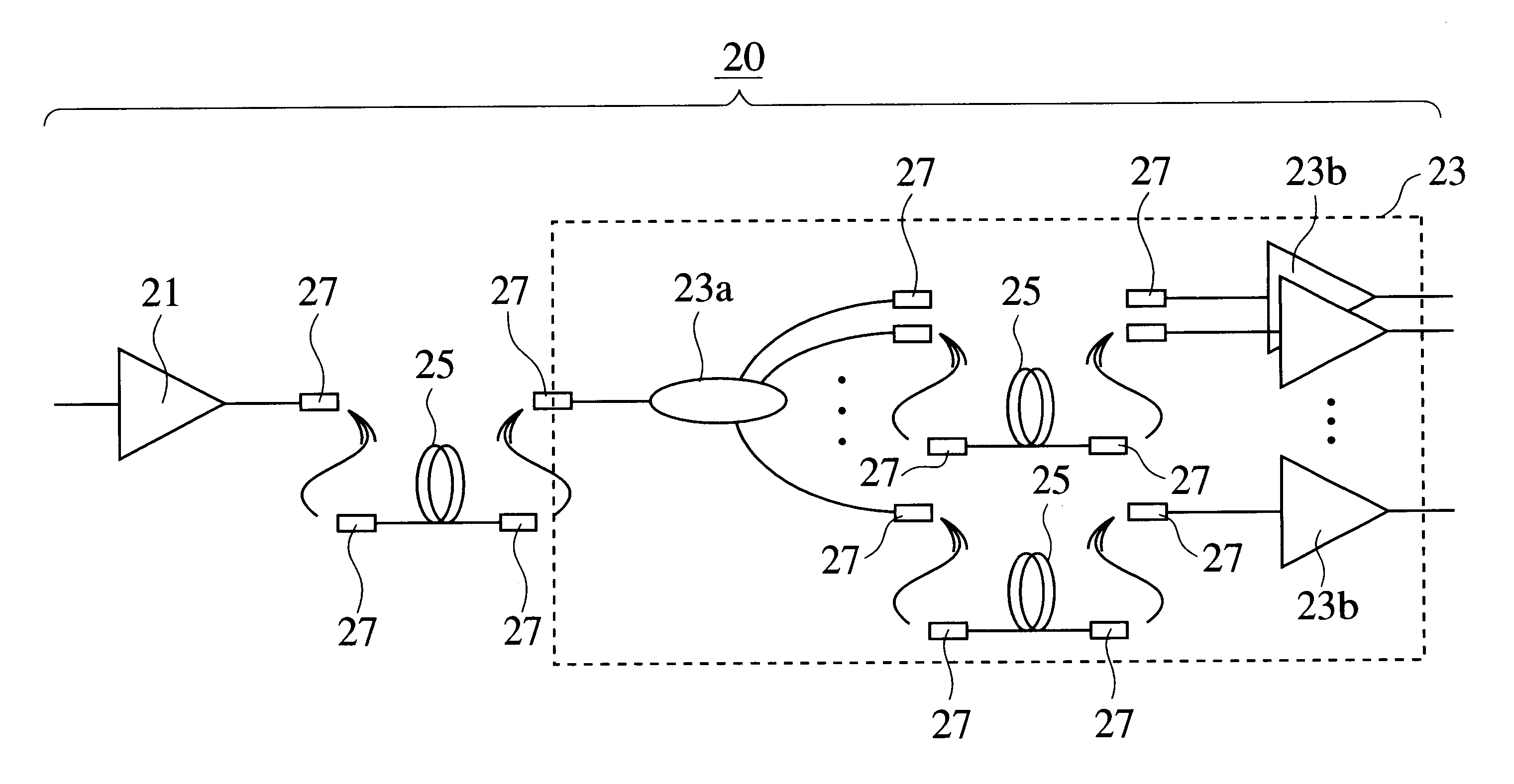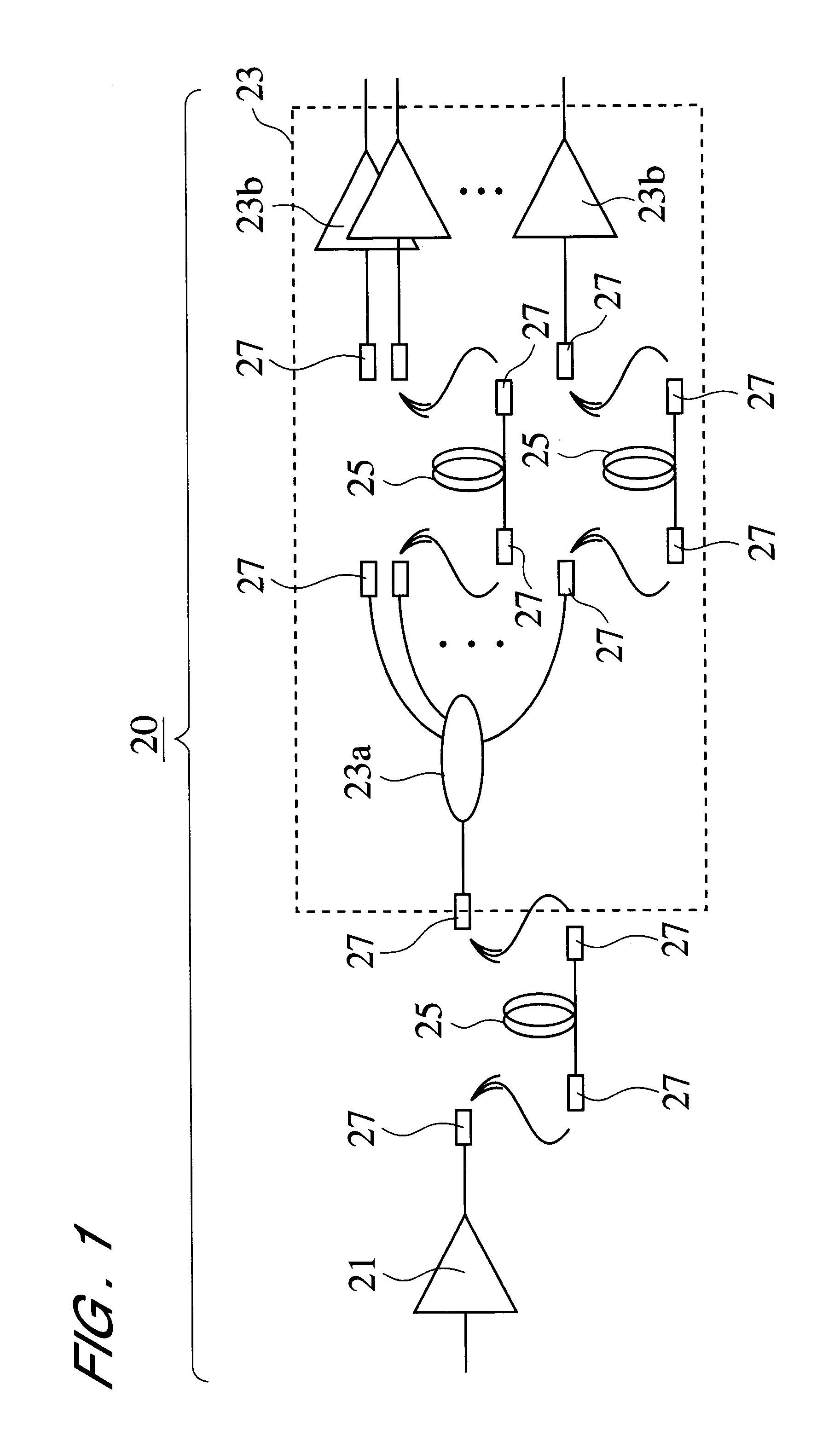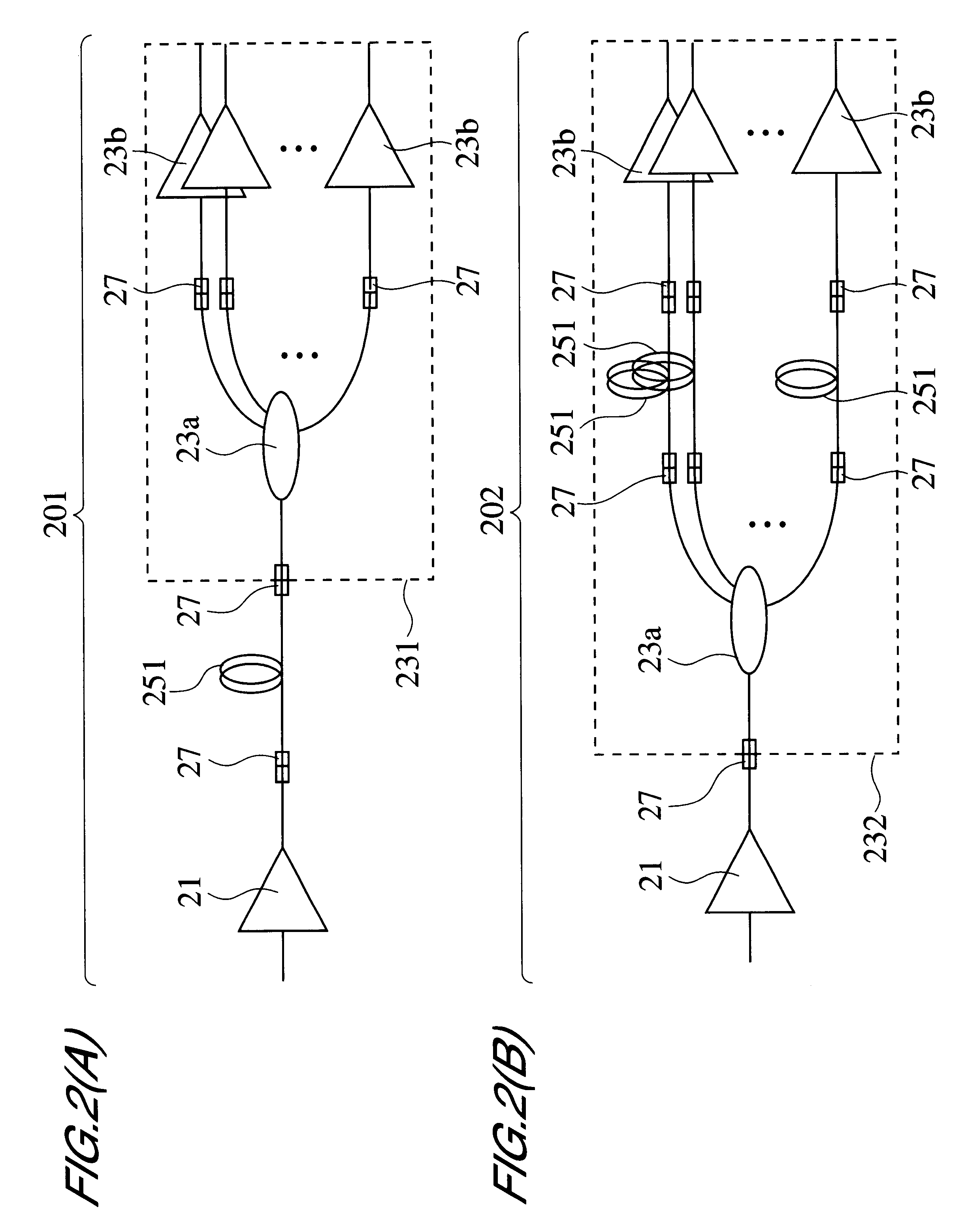Optical amplifier
a technology of optical amplifiers and amplifiers, applied in the field of optical amplifiers, can solve the problems of nonlinear optical limit, high optical power loss of dcfs and fbgs, and transmission line nonlinear effects,
- Summary
- Abstract
- Description
- Claims
- Application Information
AI Technical Summary
Problems solved by technology
Method used
Image
Examples
first embodiment
FIG. 1 is a diagram depicting the structure of the optical amplifier 20 of the first embodiment. The optical amplifier 20 of the first embodiment is an optical amplifier obtained by the cascade connection of two stages of optical amplifier units: a pre-stage optical amplifier unit 21 and a post-stage optical amplifier unit 23.
In the present invention, the post-stage optical amplifier unit 23 is configured as an optical amplifier unit comprising a first optical component 23a of a single input and N outputs that has an optical-demultiplexing or wavelength-division function, and N units of optical amplification means 23b provided in accordance with the N output terminals of the first optical component 23a. N is an arbitrary integer of 2 or greater.
The task of each of the N units of optical amplification means 23b is to amplify light or an optical signal that is output from the corresponding output terminals of the first optical component 23a.
In the configurational example depicted in F...
second embodiment
FIG. 4 is a diagram illustrating a configurational example of an optical amplifier 30 pertaining to a second embodiment. The optical amplifier 30 pertaining to the second aspect of the embodiment is different from the first aspect of the embodiment in that optical switches and a plurality of suboptical components (which correspond to second optical components) are used to form the required connections between the constituent elements depicted in FIG. 1, that is, between the optical components 21 and 23a, and / or 23a and 23b. Using optical switches allows connections between the required constituent elements to be made by selecting the desired suboptical components from among a plurality of suboptical components, and forming the connections by means of the selected suboptical components. In the optical amplifiers 201-204 of the above-described first embodiment (in which such optical switches are dispensed with), connections between the required constituent elements can only be made by...
third embodiment
The output characteristics of a WDM signal commonly exhibit a wavelength dependency when this signal is amplified with an EDFA. Specifically, an EDFA exhibits output characteristics that posses wavelength dependency output power difference.
When signal light that has wavelength dependency output power difference is amplified with a multistage EDFA, an S / N bias that depends on the wavelength is sometimes created and, in extreme cases, part of the signal is sometimes lost or another problem encountered.
In particular, the biggest problem with the optical output power difference is the increase in optical intensity in a specific wavelength band. To take optical amplification in the 1.5-.mu.m band as an example, optical intensity often increases near a wavelength of 1530 nm. As a result, light near the 1530-nm wavelength is intensified with multistage amplification.
Intensification of light near the 1530-nm wavelength enhances the pumping light consumed by the signals in this wavelength ba...
PUM
 Login to View More
Login to View More Abstract
Description
Claims
Application Information
 Login to View More
Login to View More - R&D
- Intellectual Property
- Life Sciences
- Materials
- Tech Scout
- Unparalleled Data Quality
- Higher Quality Content
- 60% Fewer Hallucinations
Browse by: Latest US Patents, China's latest patents, Technical Efficacy Thesaurus, Application Domain, Technology Topic, Popular Technical Reports.
© 2025 PatSnap. All rights reserved.Legal|Privacy policy|Modern Slavery Act Transparency Statement|Sitemap|About US| Contact US: help@patsnap.com



